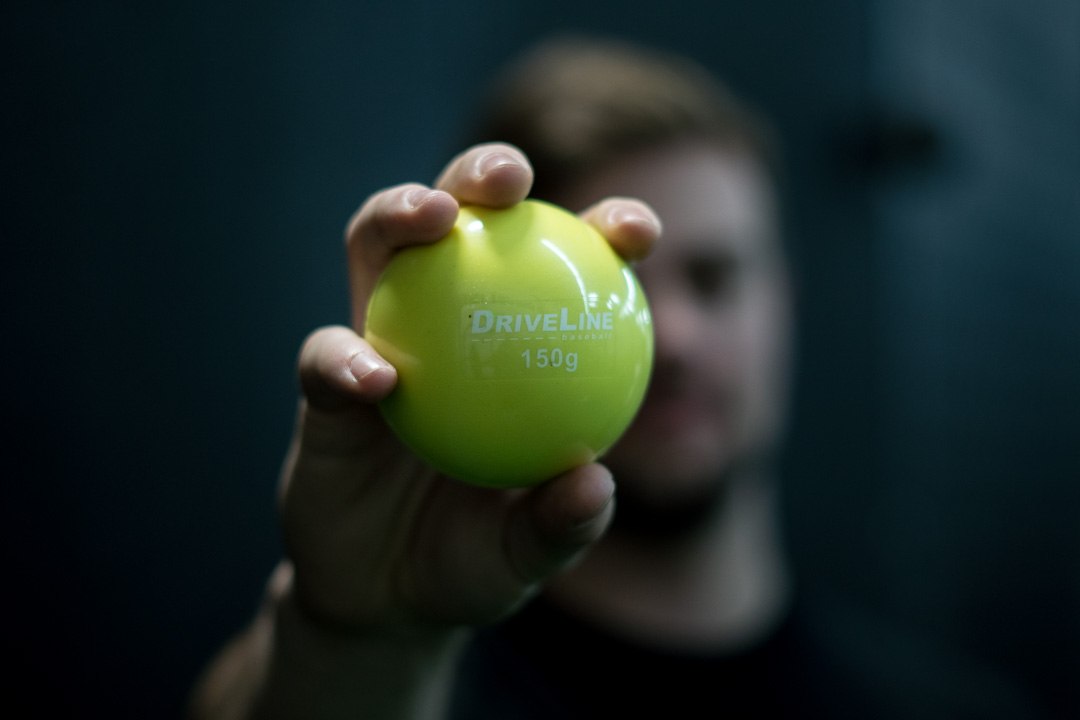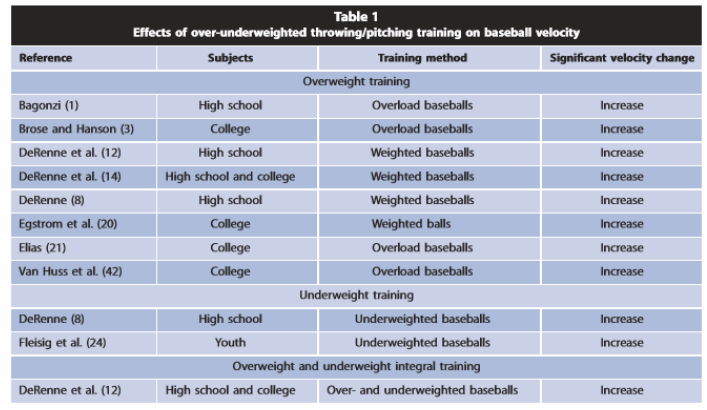4 Great Reasons To Throw Weighted Baseballs

Update July 2016: At the time of publishing we made the claim that underweight balls were safer than 5 oz baseballs. After years of continuing research and validated research by other third parties, we now know that underload throws are more stressful. For more on this read: Weighted Baseballs Safety and Consequences.
Update December 2017: Weighted baseballs can be a great training tool but they can be used incorrectly if you believe that all you need to do to improve is perform pulldowns.
We use underweight and overweight baseballs here in our throwing program to develop velocity for the majority of our trainees going through our Elite Baseball Training program. I’ve talked about weighted baseballs in the past with a basic program sample, but it’s important to note that the correct program will vary depending on the athlete’s age, training status, injuries, current velocity, and various other factors. Simply picking up a set of modified baseballs and throwing them 3-4 times a week is probably a bad idea, especially if you haven’t built up a reasonable base of strength instead. With that in mind, here are four great reasons to integrate weighted (or overload/underload) baseball throwing into your training program:
#1: Underweight Baseballs are Safer to Throw
Underweight baseballs have been shown to produce superior elbow angular velocity and shoulder angular velocity but profile with similar kinetic loads on the shoulder and elbow. (Source: ASMI) This dispels the popular myth that lightweight baseballs are more dangerous to throw!
Update December 2017: ASMI’s biomechanical study of weighted balls on high school and college players saw similar stresses between 4- and 5-oz baseballs. We reviewed the study here.
#2: Underweight Baseballs Train Faster Arm Speed
In the ASMI source above, you can read that lightweight baseballs produced higher elbow/shoulder angular velocities with higher ball velocity. This helps to train the arm to move faster and develop quicker arm speed! Proprioceptive sense can be developed as a result to help the athlete learn a different biomechanical pattern to produce better velocity with a standard baseball in competition.
#3: Overweight Baseballs Help Condition the Arm
Weighted (overload) baseballs will decrease the kinematics of the throwing motion while likely increasing the kinetics on the shoulder and elbow joint. In doing so, you can help move across the speed-strength continuum to generate a different physiological response in the tissues responsible for accelerating – and more importantly, decelerating – the baseball. There are a lot of drills that can be done with heavy baseballs, like 2 lb. ones.
#4: Under/Overload Training Simply Produces Higher Fastball Velocities!
Dr. Coop DeRenne’s research backs this up time and time again. Using a simple Google search, I suggest reading these relevant research papers:
- Effects of General, Special, and Specific Resistance Training on Throwing Velocity in Baseball: A Brief Review (DeRenne et al, 2001)
- Effects of Baseball Weighted Implement Training: A Brief Review (DeRenne et al, 2009)
- Increasing Throwing Velocity (DeRenne, 1985)
- Effects of Under-and Over-Weighted Implement Training and Pitching Velocity (1994)

Enough said!
Comment section
Add a Comment
You must be logged in to post a comment.
Weighted Baseball Research and the Data Supporting Their Use - Driveline Baseball -
[…] use to believe that underload balls were less stressful, after years of internal data we now believe they have a higher peak stress and are more stressful […]